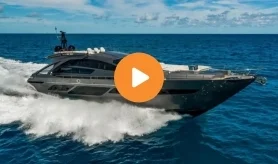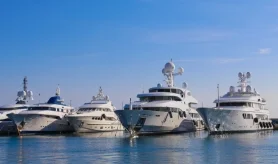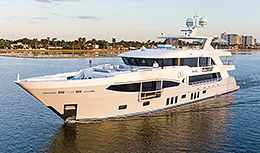- Alaskan Yachts
- Azimut Yachts
- Back Cove Yachts
- Beneteau Yachts
- Benetti Superyachts
- Bertram Yachts
- Boston Whaler
- Broward Yachts
- Buddy Davis Sportfish
- Burger Yachts
- Cabo Yachts
- Catamarans
- Carver Motoryachts
- Center Console
- Chris-Craft Yachts
- Cruisers Yachts
- DeFever Trawlers
- Dufour Sailboats
- Fairline Yachts
- Feadship Yachts
- Ferretti Yachts
- Formula Yachts
- Fountaine Pajot Cats
- Grady-White
- Grand Banks Trawlers
- Hargrave Yachts
- Hatteras Yachts
- Hinckley Picnic Boats
- Horizon Yachts
- Hydra-Sports
- Intrepid Boats
- Jarrett Bay Sportfish
- Jeanneau Yachts
- Kadey-Krogen Trawlers
- Lazzara Yachts
- Lekker Boats
- Luhrs Sportfish
- Marlow Yachts
- Maritimo Yachts
- Marquis Yachts
- McKinna Motoryachts
- Meridian Yachts
- Midnight Express
- MJM Yachts
- Mochi Craft
- Neptunus Motoryachts
- Nordhavn Trawlers
- Nordic Tugs
- Numarine Yachts
- Ocean Alexander Yachts
- Offshore Yachts
- Outer Reef
- Oyster Sailing Yachts
- Pacific Mariner Yachts
- Palmer Johnson Yachts
Dream Yachts in the Making: Numarine Talks
Each excellent Numarine yacht is meticulously brought to life by master designers, top naval architects, and expert craftsmen. In this interview, we talk with Can Yalman and Umberto Tagliavini, two of the long-term collaborators of Numarine, and discover their journey across design, architecture and yacht making.
This article was featured in the yachting magazine Numarine Insight.
Can you tell us something of your journey?
CAN YALMAN: I was born in Istanbul and moved to America when I was 12 years old. I have spent a good deal of my education in the United States, eventually graduating with a BFA industrial design degree from the Parsons School of Design in New York. Moving back to Istanbul in 1994, I joined the Arçelik Design team, where I have created many influential designs like the Orbital series. I started my design company, Can Yalman Design, in 2001 and we provide design services to a variety of clients across many industries.
UMBERTO TAGLIAVINI: So, I was born in Santa Margherita Ligure (S.M.L.), where Italian boating began in the 1960s. From an early age, I have always had a love for the sea and all its activities. I continued my studies and always work in the field of boats, both for work and pleasure. In my office, we design pleasure boats but also work on ships. I opened my studio in 1985 and continue today with my three collaborators, Aldo, Clara, and Gabriel. Our principal activity in the ship sector is technical design, focusing on hulls, structures, and systems.
What about your first introduction to yachting? Where did your passion begin?
CY: I have been involved with the sea since the day I was born, I learned how to swim in the Bosphorus currents, I also spent my childhood on the Princess Islands in Istanbul where we had access to all kinds of rowing, power and sailing boats. My genuine passion for the sea started with windsurfing in my early teens and has continued to this day with kite surfing and foiling. My family is very connected to the sea as well. Throughout my life, we had a boat that started as a small rib, then a day boat to a weekender and eventually to a 55 feet power yacht. All that experience of the sea would eventually lead me to my passion for designing yachts.
UT: My first introduction to yachting was in early childhood. When I was an infant I walked in the port of S.M.L. full of pleasure boats and fishing boats. Looking at them, I always told myself that one day I would draw them, and this has come true. My work is not just a job but a passion that, with each new project, is both a challenge and a joy.

Looking at them, I always told myself that one day I would draw them, and this has come true. My work is not just a job but a passion that, with each new project, is a challenge and a joy.”
How did you join Numarine?
CY: I joined Numarine at the very first stages. Mr. Malaz is a lifelong friend, and we had worked on various design projects in the past. He simply asked me to join him in the next chapter of Numarine and I jumped aboard. We have never looked back since.
UT: Around 2002, I had a meeting with Mr. Ömer Malaz, the founder, and shortly thereafter joined the team. When I look back to our many years spent together there was a good feeling right away, which continues to this day.
Can you describe your creative process?
CY: My creative process has been pretty much stable since the Parsons School of Design. Of course, there are certain tweaks and modifications, as well as accumulated experience that allow me to expedite certain steps when necessary. Design is about experience, so we try to emulate our customers and the objects that we design to its fullest potential. We try to analyze and understand as much from the market, customers, manufacturing, sales and marketing as possible to create a unique product that is always pushing the boundaries and improving. We try to create products that are not trendy, but will last and become better with age, and hopefully the classics of tomorrow.
UT: I would not call mine a real creative process since I am a naval architect and I have to be very articulate with things. As for the creation of a hull, however, I would say I know how to interpret the shipyard’s wishes.
Design is about experience, so we try to emulate our customers and the objects that we design to its fullest potential. We try to create products that are not trendy but will last and become better with age.
How about your design philosophy? Does it change for each model?
CY: Each project is unique and comes with its own challenges. With Numarine, the idea is to create a line of yachts that speak the same language but are distinct and carry the design lines in a specific way that is unmistakably Numarine. We also cater to our customers with bespoke designs that might include just color and graphics to major modifications to the exterior and interior spaces. Sometimes the customer is the driving force behind a design. And at other times the market requires a specific innovation and sometimes it is the efficiency of manufacture that drives a project in a certain direction. We try to grow with every project.
What is the secret of the signature Numarine design?
CY: The secret is the longevity of our collaboration. After 20 years of working together, we understand our needs and our customers. We try to push the limits of design, technology and manufacturing to create a timeless yacht. We have created a line that is instantly recognizable in any port in the world and one that has the wow factor that people want to be a part of.
UT: Well, the perfect hull does not actually exist, but there are excellent hulls which I would say are the signature of Numarine. Those designed for Numarine are excellent hulls, starting with the first planing 55′ although perhaps the best was the planing 78′. The best of the displacement series is the 37XP. Besides sailing well, the boat must have sides that do not cause the waves to rise on deck. This is for comfort on board, and the 37XP perfectly achieves this.
We try to push the limits of design, technology and manufacturing to create a yacht that is timeless. We have created a line that is instantly recognizable in any port in the world.
What about some fine details that make the interior or exterior of Numarine yachts truly unique?
CY: We started with a line of performance yachts that emulate sea creatures with strong characteristic muscular lines. This developed into a series of yachts from 60 feet to 130 feet. The series all had gill-like window details and exterior bulwark sidelines that were protective and distinguishable at the same time. Next, with the XP lines, we also strived for a design that would stand out and be symbolic of these explorer yachts. Long range, bold yet elegant, and with space that would make any larger yacht jealous. We have always tried to create a connection between our yachts and the sea, with large open lounges fit for relaxation and entertainment, and also with enormous picture windows that allow you to be in the moment wherever you might be at anchor.

How do you balance efficiency, light, and space in the designs?
CY: There is a fine balance between the interior volume and the exterior elegance of a yacht. Many yachts are huge internally yet bulky on the outside and many elegant, beautiful yachts lack the interior space many customers desire. This is a compromise, but there are tricks that can tweak the lines in your favor if you can play with the correct lines. Of course, there is a lot of trial and sketching to get the perfect proportion and the right look and feel in achieving that beautiful line. We design from within as well as from without in order to strike the right balance.
There is a fine balance between the interior volume and the exterior elegance of a yacht… We design from within as well as from without in order to strike the right balance..
Given the number of boats you have designed, is there one you are particularly fond of?
CY: It is very hard to pick a favorite among all the Numarine yachts we have designed, but there are some that stand out for me. For example, the 78HT is an amazing boat with incredible lines that hopefully will stand the test of time. The 70HT is similar, yet compact and elegant. The 62’s, both HT and Fly, are a marvel of engineering and production. Also noteworthy is the upcoming 30XP, as the explorers are very dear to me.
UT: I must say that one I am most fond of is the hull of the 26XP because we managed to make a compromise to have the planing, semi-planing and displacement hull on the same mold with small modifications. This, for the shipyard, means that it has the possibility, without major investments, of offering different navigation solutions.
What about the future of yacht design?
CY: The future is very bright as far as yacht design goes. There is a tremendous demand for yachts and customized approaches to interior design as well. The trick is to create a design that is most adaptable to different customer needs, easily manufacturable and that can even evolve.
UT: There have been changes in the technical aspect of the hulls, but not too evident. With CFD programs, the naval architect has a better chance of achieving a better performing hull. As for the future, well, we’ll see.
Interested in learning more about Numarine Yachts? Contact Alex G. Clarke, who is ready to answer any questions and start your journey to owning a new yacht.
Speak With a Superyacht Specialist:






